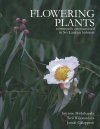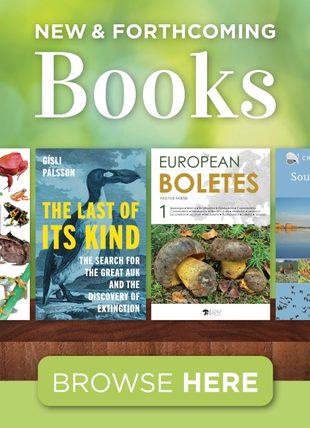"When I was asked to write a review for a book on Flowering Plants Commonly Encountered in Sri Lankan Habitats my first reaction was one of deep gratification. When a trio of senior scientists produces a book of this nature it is a privilege to respond positively to their request. I was flattered. 'After all,' I told myself, 'I know the names of all the 15 or 20 flowers commonly used in wedding bouquets, presentation baskets and dinner tables.' I mentally added another of 50 or so of flowers that I probably did not know and voila! I was soon going to be an expert on the subject.
Doubts assailed me when the book arrived. It was literally a tome – a beautifully presented tome – which is soon going to be an absolutely essential addition to every coffee table in our island. Its very appearance was one of awesome scholarship expected, I suppose, of the three well-known personalities – Drs. Sriyanie Miththapala, Janaki Galappatti and Siril Wijesundara. Added to this glittering array of erudition is the foreword by Dr. Roland Silva, President of the National Trust of Sri Lanka, under the auspices of which the book is printed. Reviewing was going to be a daunting task. My heart quailed and I hurried to the phone. 'I hope you are aware that I do not have a degree in Science,' I told Dr. Miththapala. 'Don't worry,' she soothed. 'Our work is written for laymen and if you do not understand it, we are in deep trouble.'
Somewhat reassured I tackled the book and prepared to be bored. Imagine my complete and utter surprise to find that I was totally riveted and completely absorbed from page one. The first shock was one of numbers. Readers may hazard a guess as to how many flowering plants there are in Sri Lanka. Seventy? A Hundred? Two hundred? Or let's go berserk and say one thousand? Not so! We have four thousand flowering plants in our island not counting introduced species. The sheer numbers alone would have been a frightening academic exercise but in the hands of three experts it has "flowered into' (if you'll pardon the pun) a thing of beauty and not merely a book of botanical knowledge, interesting only to a student of the subject.
A timely warning starts the reader off on this journey of discovery. We learn with dismay that our plants are in peril. Over 72 species have been known to have become extinct during the last 200 years due to loss of habitat. Added to this danger we have introduced several invasive alien species, which have run amok and caused considerable ecological damage. And of course there is that substantial global problem – the warming of the earth. Having said all this, the three authors proceed to the main purpose of the book – a celebration and appreciation of the beauty of Sri Lanka's flowering plants in all their tremendous variety and splendour. This is a book of exploration. It is truly a mind opener to a new area of knowledge for the layman. Being essentially teachers themselves, the authors cannot help but instruct. The reader is told how to recognize this infinite plant variety laid out before them. A division into categories is made. But I skipped it! I am not planning on impressing anyone with my knowledge. Some readers may feel likewise unless they are students themselves. I got down to a serious enjoyment of the book.
To begin each page every picture and plant write-up carries a minimum of three descriptive names out of a possible five. The Botanical one, the Sinhala one, the Tamil one, the English one and the Family one. Each plant is described with scientific accuracy and along with this information there are titillating snippets, which add immeasurably to the reading pleasure. For example, did you know that the lovely looking Angel's Trumpet contains a substance that can seriously affect the nervous system? Predictably it is banned in some parts of the world? (Amazonian tribes used the narcotic to induce hallucinations.) Other similar stories abound. A student of History like myself is fascinated to discover that the Banyan Tree got its name from the Indian caste of Banias (merchants) who plied their trade under its shade in ancient times. Or take the Sal flower – a bloom I associated mainly with the birth of the Buddha, Buddhist temples and shrine offerings and to which I enjoyed a kind of emotional possessiveness Alas, this plant I regarded as being quintessentially Sri Lankan, was introduced into the island in the late 19th century and is a native of South America and the Carribbean. From this book I found out that the Sal associated with Buddhism is not 'our' Sal but another tree altogether.
Our beautiful Wesak Orchid was discovered by Lennie Ratwatte but commemorates the wife of Sri Lanka's Auditor General in the late 1800s. It used to be called 'Mrs. McCarthy's Orchid'. I found the quoted description of the Durian very amusing (and very apt) 'custard passed through a sewer pipe.' Foreigners have found in Sri Lanka a treasury of plants. The Queen's Flower (Lagerstroemia if you want to be scholarly) was taken by a Swedish Biologist of that name to the great biologist Linnaeus. A favourite name of mine for girls has always been 'Champak' and this beautiful flower of the Magnolia Family was mentioned in the Mahavamsa. According to Professor Kottegoda, the champak was offered to Arahat Mahinda who preached Buddhism to King Devanampiyatissa.
Another little bit of wisdom. Ever wondered how villagers kept cockroaches and insects at bay? They used the Pitcher Plant as natural traps for insects while the liquid in the plant is said to cure whooping cough. Contained within the 216 pages of 'Flowering Plants' are Plants of the Wet Zone, the Dry Zone, Coastal Plants, Parasitic plants and even Plants of Disturbed areas. Aquatic plants are of particular interest since they seem to be so much part of landscape. In 1986 the Blue Water Lily or the Nil Manel was named the National Flower of Sri Lanka.
No review of this enchantingly presented book can be complete without special reference to the many Sri Lankan photographers whose work is almost lyrically perfect. The photographic details, the colours and shading of the plants, the backgrounds against which the flowers have been photographed and the sheer artistry of the presentation, cannot be sufficiently lauded. They are the work of genius. Any review usually has a negative comment or two as being almost mandatory but I cannot find one to make. The research that has gone into this book is astounding. Suffice to say that in the hands of three such enthusiastic biologists as Sriyanie Miththapala, Janaki Galappatti and Siril Wijesundara one expects no less than perfection, I am delighted to be able to say that one gets it."
- Goolbai Gunasekara, The Sunday Times, Sri Lanka (http://www.sundaytimes.lk)
























